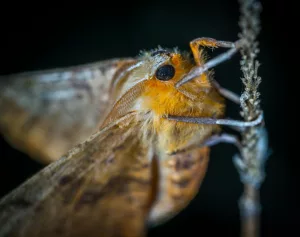Hummingbirds are renowned for their ability to hover effortlessly in mid-air, a feat that sets them apart from other birds. This remarkable skill can be attributed to the unique anatomy and flight mechanics of these tiny creatures. One key factor enabling hummingbirds to hover is their remarkable wing structure; their wings can beat at an astonishing rate of up to 80 times per second, generating lift and thrust simultaneously.
The Role of Wing Morphology
Understanding Wing Structure
Hummingbirds possess a specialized wing shape that allows them to generate lift in both the upstroke and downstroke of their wingbeat. Unlike most birds, which generate lift primarily during the downstroke, hummingbirds produce lift during both phases of the wingbeat cycle. This continuous lift production enables them to stay airborne without needing to glide or flap continuously. The unique shape of hummingbird wings, with a high aspect ratio and flexibility, allows them to perform intricate maneuvers with precision and control.
Flexibility and Control
The flexibility of hummingbird wings is not just about shape but also about the material composition and joint structure. Their wings are constructed to allow a wide range of motion; this means they can rapidly change the angle and orientation of their wings, enabling complex aerial acrobatics. This flexibility is enhanced by the ball-and-socket joint at the shoulder, which provides a greater range of motion compared to other birds.
Case Study: Ruby-Throated Hummingbird
Consider the Ruby-throated hummingbird, a common species in North America. These birds often engage in rapid, agile flights to access nectar from flowers. Their wing morphology allows them to hover in front of flowers, darting forward and backward with ease. Observations show that their hovering ability is essential for feeding on flowers with deep corollas, where precision and control are paramount.
Practical Tip: Creating a Hummingbird-Friendly Garden
If you’re looking to attract these tiny flyers to your garden, consider planting a variety of tubular flowers. These blooms are perfect for the hummingbird’s long, slender beak and allow them to feed efficiently. Examples include trumpet vine, bee balm, and columbine. Additionally, providing feeders with a sugar-water solution can supplement their diet, especially when natural food sources are scarce.
The Aerodynamics of Hovering Flight
Vortex Ring Dynamics
Hovering is an energetically demanding flight mode, requiring precise control of wing movements and body orientation. Hummingbirds achieve this by generating a vortex ring with each wingbeat, creating a stable platform of air that supports their body weight. By maintaining high wingbeat frequencies and adjusting the angle of attack of their wings, hummingbirds can fine-tune their hovering position with remarkable stability. Their ability to produce lift during both the upstroke and downstroke, in combination with their rapid wingbeat rate, enables them to maintain a stationary position in the air with exceptional precision.
Energy Efficiency in Hovering
Despite the high energy demands, hummingbirds have evolved to optimize their energy use during hovering. Research indicates that hummingbirds can adjust their metabolism and energy expenditure based on the availability of food. For instance, when nectar is abundant, they can afford to expend more energy hovering for longer periods, whereas in times of scarcity, they become more selective and efficient in their movements.
Practical Tip: Observing Hummingbird Feeder Behavior
To witness these aerodynamics in action, observe a hummingbird feeder in your backyard. You’ll notice how these birds hover perfectly still while feeding, even in windy conditions. Their ability to counteract wind currents by adjusting their wingbeats and body angle is a testament to their aerodynamic prowess.
The Influence of Environmental Conditions
Hummingbirds are incredibly adept at adapting their flight mechanics to varying environmental conditions. For example, in high winds or rain, they exhibit subtle changes in their wingbeat frequency and amplitude to maintain stability. Watching a hummingbird navigate such challenges can provide valuable insights into their resilience and adaptability.
The Role of Muscle Physiology
Specialized Muscle Adaptations
Hummingbirds possess specialized flight muscles that are adapted for high-intensity, aerobic activity. These muscles are capable of rapid contractions and high endurance, allowing hummingbirds to sustain their rapid wingbeats during hovering flight. Additionally, the unique muscle structure of hummingbirds enables them to modulate their wing movements with exceptional precision, contributing to their unrivaled agility in the air. The fast-twitch muscles of hummingbirds play a crucial role in powering their rapid wingbeats, providing the necessary strength and speed for sustained hovering flight.
Muscle Fiber Composition
Delving deeper, hummingbird muscles are rich in mitochondria, the powerhouses of cells, which supply the energy needed for their tireless movements. This high mitochondrial density is crucial for sustaining their rapid wingbeats. Moreover, their muscles contain a higher proportion of fast-twitch fibers compared to other birds, allowing for quick, powerful contractions essential for hovering.
Case Example: Anna’s Hummingbird
Anna’s hummingbird, found along the Pacific coast, showcases these muscle adaptations vividly. During courtship displays, males perform dramatic dive displays, pulling up sharply from the dive and hovering momentarily. This requires explosive muscle power and precise control, both hallmarks of their unique muscle physiology.
Practical Insight: Supporting Hummingbird Health
To support the health and vitality of hummingbirds visiting your yard, ensure they have access to both natural nectar sources and clean feeders. It’s important to clean feeders regularly to prevent the growth of harmful mold and bacteria, which can negatively impact their health.
Evolutionary Adaptations
The Evolutionary Journey
The evolution of hummingbirds is a fascinating tale of adaptation and survival. Over millions of years, these birds have evolved to occupy ecological niches that require precise flying capabilities. Their hovering capacity likely evolved alongside the diversification of flowering plants, which provided the nectar resources that fuel their high-energy lifestyle.
Adaptation to Environment
Different species of hummingbirds have adapted to various ecological zones. For example, the Andean hummingbirds have developed adaptations for high-altitude life, where oxygen levels are lower. Their muscular and cardiovascular adaptations allow them to sustain hovering even in thin air, showcasing the remarkable evolutionary journey of these birds.
Practical Insight: Conservation Efforts
Understanding the evolutionary adaptations of hummingbirds can aid in conservation efforts. By recognizing the specific habitat needs and threats faced by different species, conservationists can implement targeted measures to protect these aerial marvels. Planting native flowering plants and reducing pesticide use are practical steps that can support local hummingbird populations.
The Role of Climate Change
Climate change poses a significant threat to hummingbird habitats. As temperatures rise and weather patterns shift, the availability of food sources and suitable habitats may change, potentially impacting their survival. Conservation efforts must consider these factors, ensuring that hummingbirds have access to the resources they need in a changing world.
Common Mistakes in Observing Hummingbirds
Misidentifying Species
One common mistake is misidentifying hummingbird species. With over 300 species worldwide, it’s easy to confuse them. Pay attention to details like coloration, size, and behavior. Field guides and apps can help with accurate identification.
Feeding Mistakes
Many enthusiasts make mistakes with hummingbird feeders. Using the wrong type of sugar or not cleaning feeders regularly can harm these birds. Always use a simple sugar-water solution (1 part sugar to 4 parts water) and clean feeders frequently to prevent mold and bacterial growth.
Habitat Disruption
Habitat disruption is another issue. Well-meaning gardeners might inadvertently disrupt hummingbird habitats by removing native plants or using pesticides. Focus on creating a hummingbird-friendly environment by planting a variety of nectar-rich plants and avoiding chemical use.
Practical Tip: Enhancing Observation Skills
To enhance your ability to observe and appreciate hummingbirds, invest in a good pair of binoculars. This allows you to view their intricate behaviors and subtle differences in plumage up close. Additionally, keeping a journal of your observations can help you track patterns and changes in their behavior over time.
The ability of hummingbirds to hover in mid-air is a remarkable feat of evolution, blending aerodynamic principles with specialized anatomical adaptations. By harnessing the power of rapid wingbeats, precise wing morphology, and agile muscle physiology, hummingbirds have mastered the art of hovering flight, making them one of nature’s most fascinating aerial acrobats. Their ability to hover with such control and precision showcases the intricate adaptations that have evolved over time to support their unique flight capabilities, truly marking them as aerial marvels in the natural world.
By understanding the unique adaptations and behaviors of hummingbirds, enthusiasts and researchers can contribute to their conservation and appreciate the intricate beauty of these remarkable creatures. Whether observing them in the wild or in your backyard, take a moment to appreciate the delicate dance of these tiny powerhouses.



